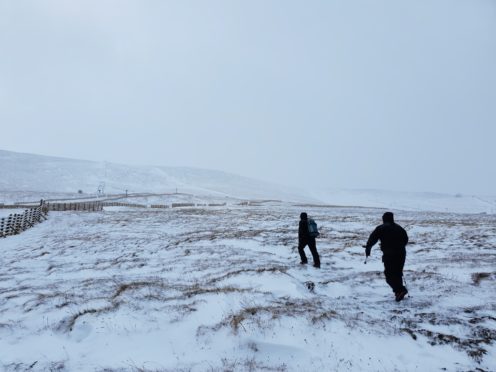A young couple who went out climbing in winds reaching 80mph in torrential rain, without a map – leaving their rucksacks at the bottom of a crag – were “caught out” by the weather.
The Edinburgh couple in their 20s had to be rescued from 400ft up in the Cairngorms in “ferocious” winter conditions shortly after midnight yesterday.
Mountaineers and climbers are being warned of the serious risks of being on the hillside without the correct planning.
Rescuers feared the Edinburgh couple may not survive the night because of the conditions at the top of the Goat Track in Coire an t-Sneachda, with one suffering from hypothermia.
Cairngorm Mountain Rescue Team led them to safety after a six-hour operation, which started at 6pm on Monday and ended at 12.30am yesterday.
Team leader Willie Anderson said: “Unfortunately the pair decided to leave their rucksack with emergency gear at the base of the crags and were unable to find their way back to them.
“They were in soft shell gear but the equipment they needed was at the bottom of the crag – they got caught out by the changing conditions which turned into a classic Cairngorms storm. The conditions were brutal.”
>> Keep up to date with the latest news with The P&J newsletter
After more than 20 incidents on the hillside in a matter of weeks – including the death of two experienced hill walkers – people who are out walking must remember that the season has changed to winter and be prepared, say Mountaineering Scotland.
Soft snow, a sudden change in season and lack of experience in winter weather are all mitigating factors in the number of mountaineering incidents being reported in the press.
A spokesman for Mountaineering Scotland said: “We are at the beginning of the winter and we have been doing a social media campaign to warn and remind people of the risks.
“The timing of our campaign, Think Winter, has been set because there are many more things that people need to think about before going up a mountain at this time of year.
“Firstly we have the people who don’t have the experience of winter – they may have been out walking at other times of the year, but things are very different in winter.
“There are additional hazards from the very same walk they might have done at another time of the year.
“Snow can be a hazard. There is not one type of snow – and each type can completely change the mountain. All types of weather must be considered before deciding to make a journey out, or not. “
Mark Groves, from the University of the Highlands and Islands, said: “People need to learn how to be on the mountainside.
“Small experiences create experienced mountaineers – and that experience is a key factor in making good decisions on the mountainside.”
